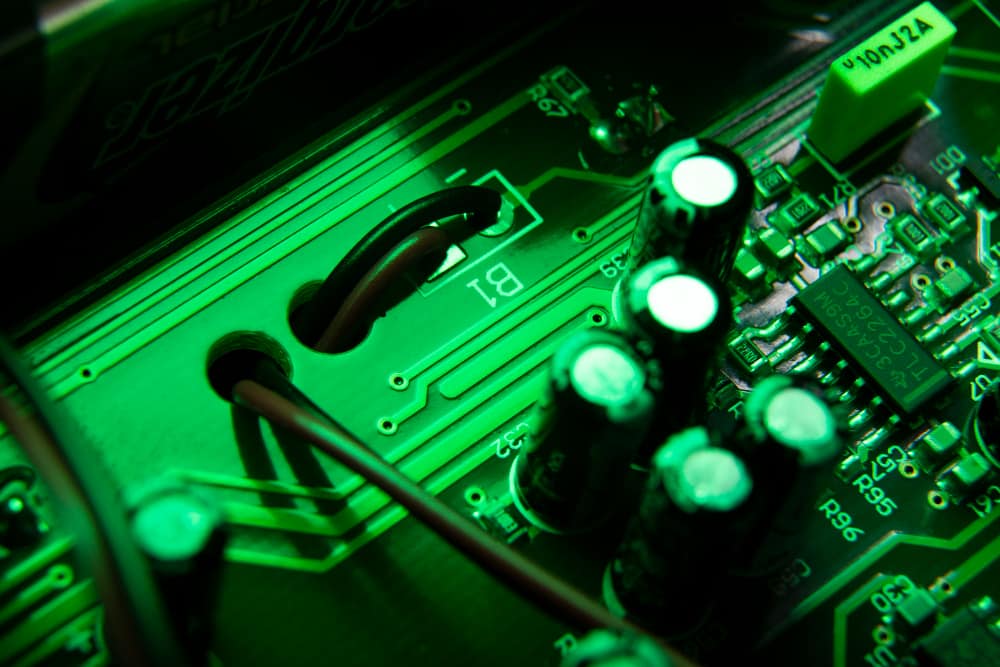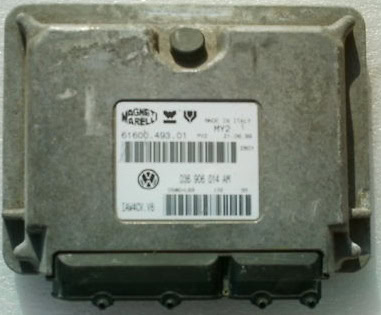The Evolution of Electronic Control Units (ECUs) in Ford vehicles is a testament to the automotive industry’s relentless pursuit of innovation. From the early days of carbureted engines to the present era of highly sophisticated, computer-driven powertrains, Ford has continually adapted and refined its ECU technology to enhance performance, fuel efficiency, and overall driving experience. In this article, we will take a journey through the evolution of Ford ECUs, highlighting key milestones and technological advancements that have shaped the modern automobile.
Read more: ECU Programming: Customizing Your Vehicle’s Performance to Suit Your Needs
Carbureted Era (Pre-1980s)
Before the widespread adoption of electronic control systems. Ford, like other automakers, relied on mechanical carburetors to manage the air-fuel mixture in the engine. These carburetors were simple but often inefficient, leading to inconsistent fuel delivery and performance. In this era, tuning an engine required manual adjustments and was often an imprecise process.

Introduction of Electronic Fuel Injection (EFI) – The 1980s
The 1980s marked a significant turning point in the evolution of Ford ECUs. Electronic Fuel Injection (EFI) systems started replacing carburetors in many Ford models. EFI utilized sensors to monitor various engine parameters, such as air intake, engine temperature, and throttle position. Enabling more precise control of the air-fuel mixture. The ECU, or Electronic Control Unit, became the brain of the engine, responsible for managing fuel delivery and ignition timing.
OBD-I and OBD-II Diagnostics – Late 1980s and 1990s
In the late 1980s and 1990s, the introduction of On-Board Diagnostics (OBD) systems further enhanced the capabilities of Ford ECUs. OBD-I, the first generation of onboard diagnostics, allowed technicians to retrieve diagnostic trouble codes (DTCs) from the ECU. Helping diagnose engine problems more efficiently. OBD-II, which became mandatory in the mid-1990s. Standardized diagnostic protocols across all automakers, making it easier to identify and fix issues.
Drive-By-Wire and Advanced Engine Management – Late 1990s to Early 2000s
The late 1990s saw the adoption of drive-by-wire technology in Ford vehicles. Instead of mechanical linkages, electronic sensors and actuators controlled throttle and other engine functions. This shift allowed for advanced safety features, such as traction control and electronic stability control, that rely on precise control over engine output. Additionally, engine management systems became more sophisticated, with the ECU adjusting fuel injection and ignition timing on-the-fly to optimize performance and fuel economy.
EcoBoost and Turbocharging – Late 2000s and Beyond
Ford’s commitment to innovation continued with the introduction of EcoBoost engines, which combined direct fuel injection with turbocharging technology. These engines, supported by advanced ECUs, delivered increased power and efficiency while reducing emissions. The ECUs in these vehicles were programmed to manage the complex interplay between turbochargers, intercoolers, and fuel delivery for maximum performance.
Hybrid and Electric Vehicles – 2010s and Beyond
In recent years, Ford has expanded its focus to include hybrid and electric vehicles. In these advanced powertrains, ECUs play a pivotal role in managing not only the engine but also electric motors and battery systems. The integration of electric and internal combustion engines necessitates even more intricate control strategies, which Ford ECUs execute seamlessly.
Connectivity and Over-the-Air Updates
Modern Ford vehicles come equipped with sophisticated infotainment systems and connectivity features. The ECUs in these vehicles are capable of receiving over-the-air updates, allowing Ford to improve software, enhance performance, and add new features remotely. This technology ensures that Ford vehicles remain up to date with the latest advancements, improving both safety and convenience.
Commonly Asked Questions
What is an ECU in a Ford vehicle?
An Electronic Control Unit (ECU) in a Ford vehicle is a computerized component that manages and controls various aspects of the vehicle’s operation, including engine performance, fuel efficiency, emissions, and safety features.
How have Ford ECUs evolved over the years?
Ford ECUs have evolved from simple mechanical carburetion systems to advanced electronic control systems, incorporating technologies like electronic fuel injection, drive-by-wire, and over-the-air updates.
What is the significance of OBD-I and OBD-II in Ford ECUs?
OBD-I (On-Board Diagnostics 1) and OBD-II (On-Board Diagnostics 2) are diagnostic systems integrated into Ford ECUs. OBD systems help diagnose engine issues by providing diagnostic trouble codes (DTCs), making troubleshooting and repairs more efficient.
Read more:Strengthening Vehicle Security: Understanding Immobilisers And Car Theft Statistics
What role does drive-by-wire technology play in Ford ECUs?
Drive-by-wire technology replaces traditional mechanical linkages with electronic sensors and actuators to control engine functions like throttle and transmission. It enables advanced safety features and precise control over engine output.
How have Ford ECUs contributed to the development of EcoBoost engines?
Ford’s ECUs have played a crucial role in optimizing EcoBoost engines by managing direct fuel injection and turbocharging, resulting in improved power, fuel efficiency, and reduced emissions.
What is the significance of Ford’s venture into hybrid and electric vehicles regarding ECUs?
Ford’s move into hybrid and electric vehicles has led to the development of ECUs that manage both internal combustion engines and electric motors, integrating power sources seamlessly for improved efficiency and performance.
Can Ford ECUs be updated remotely through over-the-air updates?
Yes, many modern Ford vehicles are equipped with ECUs that can receive over-the-air updates. These updates enable Ford to enhance vehicle software, introduce new features, and improve overall performance without requiring a visit to a dealership.
How can I diagnose ECU-related issues in my Ford vehicle?
If you suspect ECU-related issues in your Ford vehicle, you can use an OBD-II scanner to read diagnostic trouble codes. These codes can help identify problems, and a qualified technician can provide further assistance.
Are Ford ECUs standardized across all models and years?
Ford ECUs can vary across models and years, depending on the technological advancements and features offered in a specific vehicle. While certain principles and functions remain consistent, there can be differences in ECU configurations.
What can I expect in the future for Ford ECUs?
The future of Ford ECUs will likely involve even more advanced technologies, improved connectivity, enhanced autonomous driving features, and a continued focus on optimizing powertrains for sustainability and performance. Ford will remain at the forefront of automotive innovation.
Conclusion
The evolution of Ford ECUs is a remarkable journey that reflects the continuous advancement of automotive technology. From the basic carbureted systems of the past to the sophisticated ECUs in today’s hybrid and electric vehicles, Ford has consistently pushed the boundaries of innovation to improve performance, efficiency, and safety. As technology continues to evolve, we can only anticipate further refinements and enhancements in Ford’s electronic control units, contributing to a more sustainable and technologically advanced future for the automotive industry.

